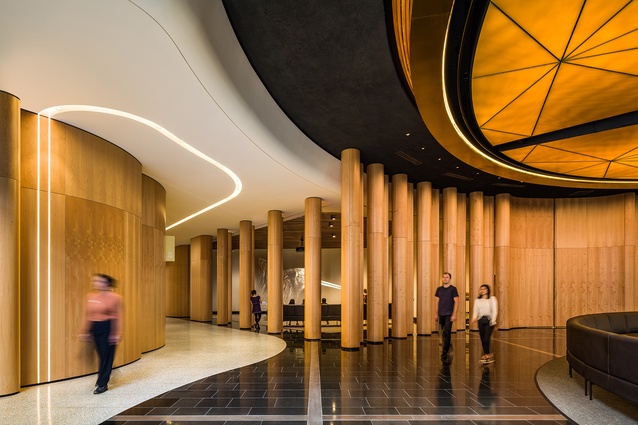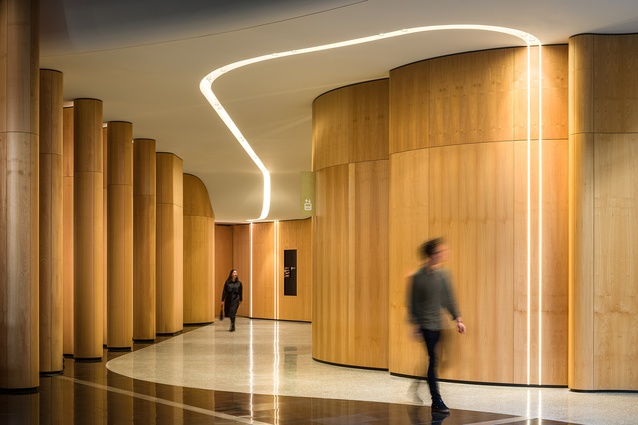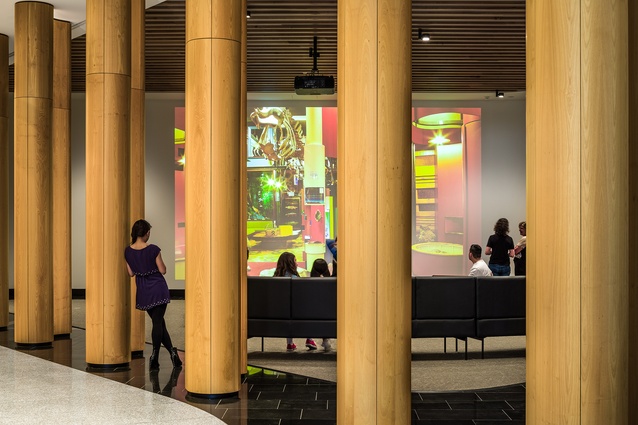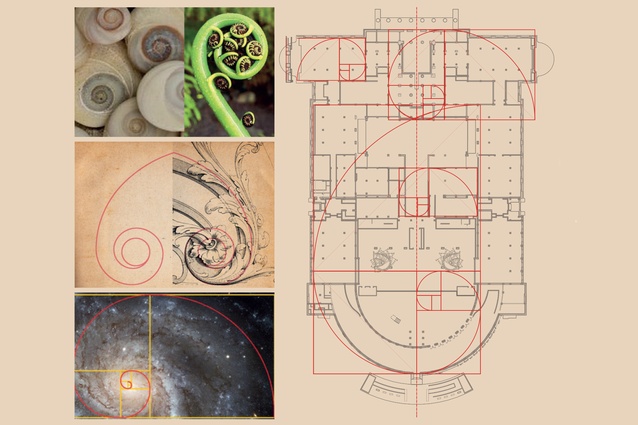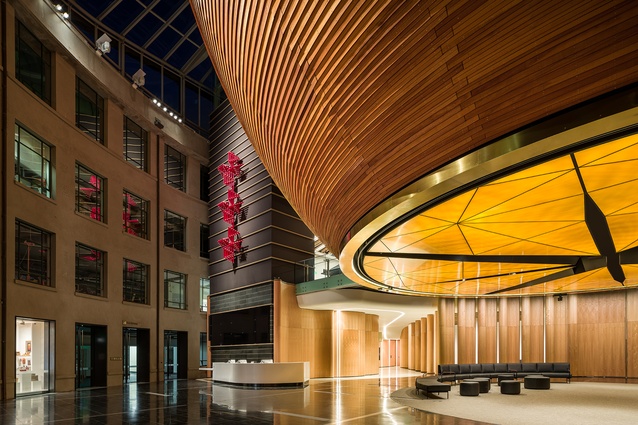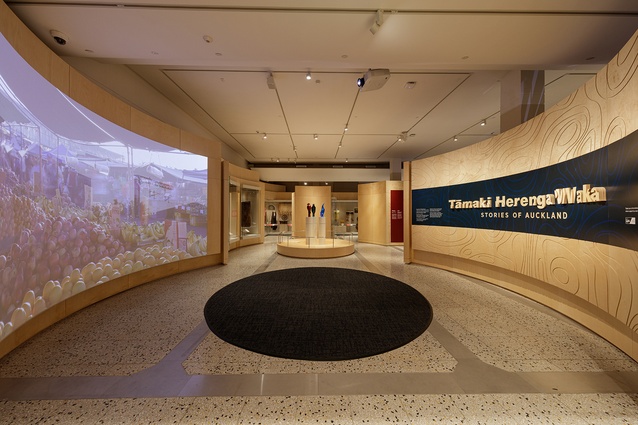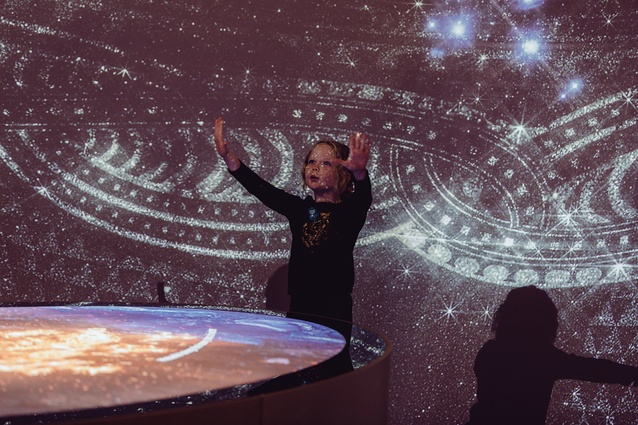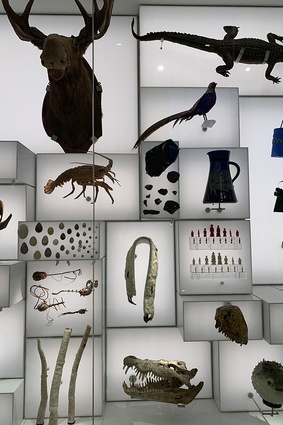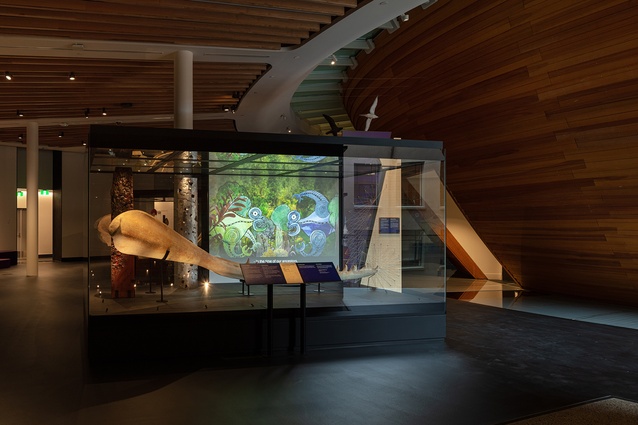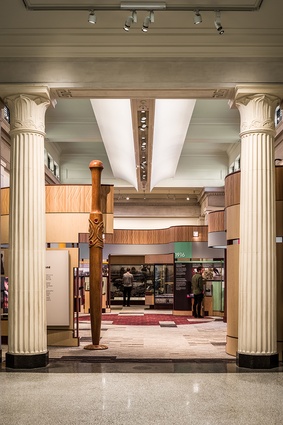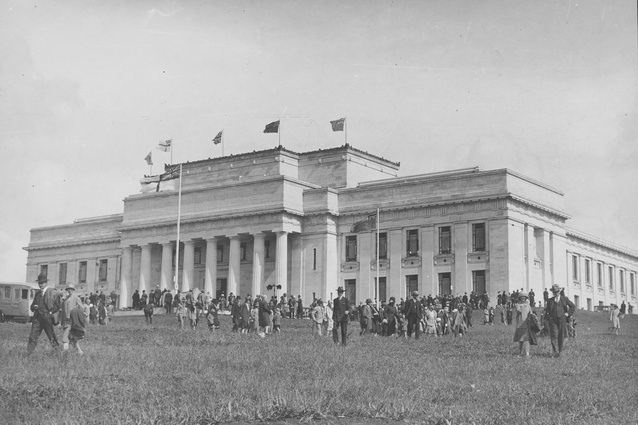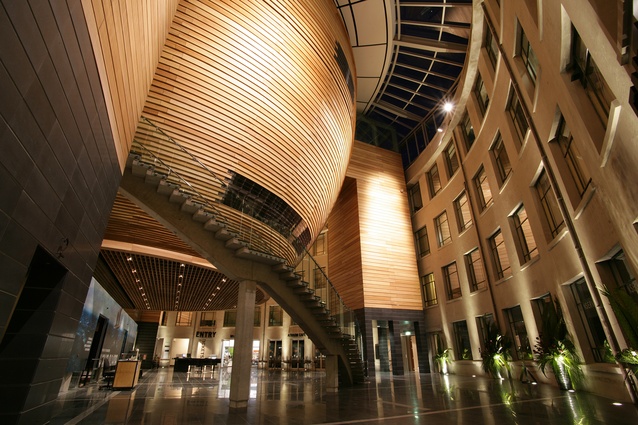Te Ao Mārama: A new order
The second in our series: Chris Barton contemplates the new column-fins of Te Ao Mārama’s design and their connection to the nautilus shell spiral and the golden mean.
In their submission for this year’s NZIA Awards, the architects of the transformed South Atrium and adjoining galleries of Tāmaki Paenga Hira, Auckland War Memorial Museum, make much of the golden mean. They talk of the 1929 colonial colossus on the hill of Pukekawa in the Auckland Domain as a great example of neoclassical architecture: a building to be much admired for its proportions. Never mind the somewhat absurd idea of importing an alien Greek Doric temple form, emblematic of the origins of European culture, here to Aotearoa.
The proportional framework is, of course, the golden mean: a “geometric discipline of sublime proportion”, underpinning classical architecture and “a naturally occurring fractal, or never-ending geometric pattern, with specific proportions that pleasingly resonate with the human sense of aesthetics”, say the architects. Their NZIA submission includes drawings, which might have once been in every architectural student’s repertoire, of how to find the mean geometrically to determine the golden rectangle and the golden spiral. “So ubiquitous is this proportion, it has become a wonderful symbol for the unifying of nature, human expression, and cultures… More than just a beautiful visual, the golden mean incorporates deep-seated natural relationships.”

Underlining this point, the architects go on to show how the koru form, derived from the mamaku fern frond, and a core element of Māori material art, also aligns closely with the golden mean. The same goes for the paper nautilus shell, although some mathematicians are quick to point out that, while the nautilus does grow its shell exhibiting a logarithmic spiral – a spiral that turns by a constant angle along its entire length, making it everywhere self-similar – that constant angle for most species of nautilus is not a match with the golden ratio. Such inconvenient maths doesn’t stop the architects.
Analysis of the existing building finds the golden ratio (1:1.618) everywhere: from the elevations to the proportions of the portico, the height of the entablature to the Doric columns and the cornice datum running through the entablature. It’s also in the plan – the golden rectangle proportioning many of the original gallery spaces. No surprise then that the architects decide to extend the ratio into the design of the southern atrium, “creating a deep and tangible harmony between the new and old museum architecture”. Apply the mean throughout the planning and detailing and “the resultant architecture is symptomatic of the proportions of natural beauty”. Job done.
If only. The problem with this line of thinking is that it assumes an ideology of inherent, universal beauty and an underlying code that architects have to crack to unlock the essential truth of beauty. The impossibility of this ideal is vividly on show in the southern atrium in the most anti-neoclassical architecture one can imagine – a hanging bowl-like form of Fijian kauri in the centre of what was once a D-shaped courtyard added to the museum’s rear in the 1960s. The ancient Greeks would be mortified.

As Richard Francis-Jones of Australian firm Francis-Jones Morehen Thorp (FJMT) puts it, the bowl (now reclaimed as a tanoa) added by Lane Priest Architects in 2006 is a world apart from the neoclassical museum. “It is almost the complete antithesis and there’s no connection between them.” Francis-Jones, in collaboration with Jasmax, designTRIBE and Salmond Reed, says the challenge was how to bring such opposite geometries together. Use the golden mean. But why bother?
As the new design reveals, the South Atrium Te Ao Mārama, with its ripe, bulbous bowl now more resplendent and bursting at the seams than ever, is a world of the living. The northern half of the museum remains the world of the dead, of the past: a world emblematic of a bygone era weighted down by the solemnity of being a war memorial and carrying the attendant sins of colonial oppression.

There is a meeting of sorts of these two disparate worlds in the way north and south now connect via two gently curved side aisles that dance their way divergently from the circular tanoa space into more processional corridors arriving in the northern skylit frame of He Taonga Māori (Māori Court) on either side of the Hotunui meeting house. On the eastern path, the light tawa timber veneer melds into the dark Tasmanian blackwood of the original museum doors.
The new circulation pathways begin from a semicircle of what seem like timber veneer columns providing a northern backdrop to the circular underside of the suspended bowl. On closer inspection, they’re columns of a different order and certainly not fluted Doric. ”We call them fins,” says Jasmax lead architect Marianne Riley of the water droplet-like profile. Francis-Jones says the inspiration was the paper nautilus spiral, which generated wave-like, biomorphic forms used in a series to create a softness and an organic quality – something adjustable and accommodating to layer into “the strict rectilinear and axial geometry of this neoclassical and neo-colonial building”.
This is a new order of column of a most unconventional kind: sometimes the columnar fins morph into pivoting double doors, or the column fin elongates into a thin spiral piece of wall, then sprouts another circular column at its end. The nautilus columns are deployed in a variety of series: as a permeable semicircular curtain to the northern perimeter of the tanoa, providing a backdrop for a stage, or as a screen for projecting a panoramic animation about the Aotearoa discovery story, enhanced by the underside of the tanoa, now a glowing, compass-like circle of light. To the west and east of the tanoa, the nautilus spiral fins delineate lift lobbies and, to the north, they form two permeable, angled walls, either side of the goods service lift, providing gallery spaces.
At the southern entrance, the curvy columns perform their most intricate snaking contortions, beginning with two beautifully carved tōtara pivoting doors marking the formal entrance to the atrium space through the southern leg of the tanoa. While the space to the northern front of the museum – the Grand Foyer and Māori Court – continues to support more formal pōwhiri processes, much care has been taken with the reconfigured South Atrium to enable it to support more informal events, including flexible pōwhiri and whakatau spaces. Longer term, one has the sense that the Te Ao Mārama, clearly set up to be a flexible space catering to a variety of events, is destined to become the new front door of the museum.
Arrival from the south provides a totally different museum experience and the ideal way to access the newly created set of special exhibitions galleries to the east and the interactive Tāmaki Herenga Waka galleries to the west. From here, school groups can also take stairs to the first floor and the revamped Imaginarium space around the tanoa, where the flexible learning space inside the bowl has also had a significant refurbishment.

Francis-Jones likens the design process of the South Atrium to archaeology. “You walked in there and thought, ‘what a mess’. You couldn’t even tell that the bowl was suspended any more. Somehow, at this point of tension where the bowl came down, there was a reception desk of all things.” Rationally, he says, it all made sense but seemed to take away all meaning from the space. “Much of what we did was a bit like digging in the dirt, digging around, uncovering it all and trying to reveal it.”
The reclaimed hanging tanoa, now surrounded by a new order of nautilus columns with three of its leg supports now in contrast to the timber bowl, is indeed a revelation – a ripe, decolonising cultural force disrupting the centre of a neoclassical building. The ancient Greeks would be mortified.
In part one of the Te Ao Mārama series, Albert Refiti discusses the vitality of naming, the cross-cultural myth-histories and the moana architecture of the refurbishment. Read more here…

